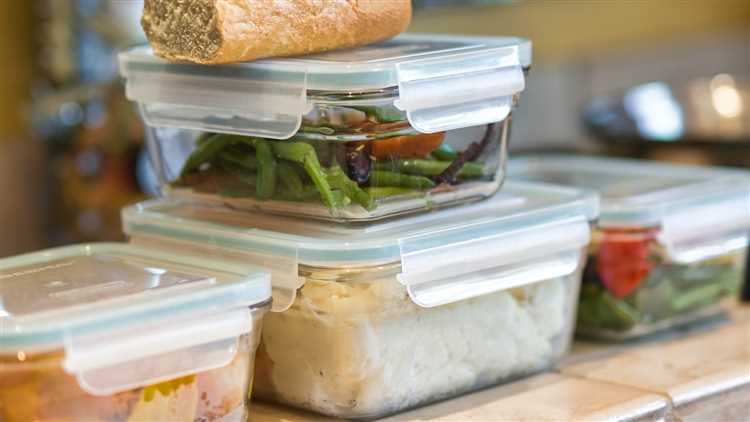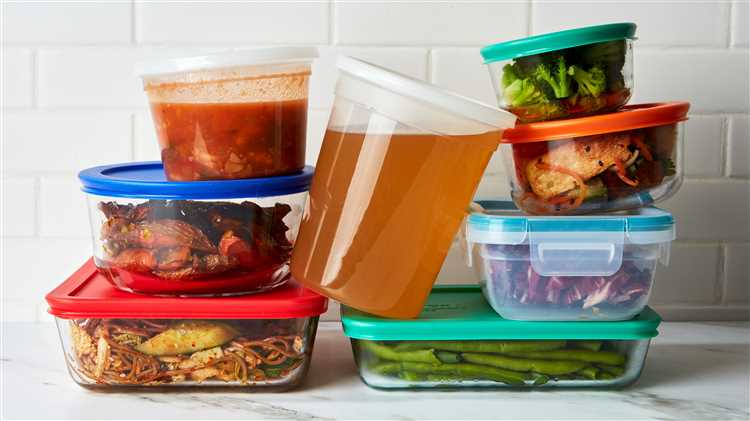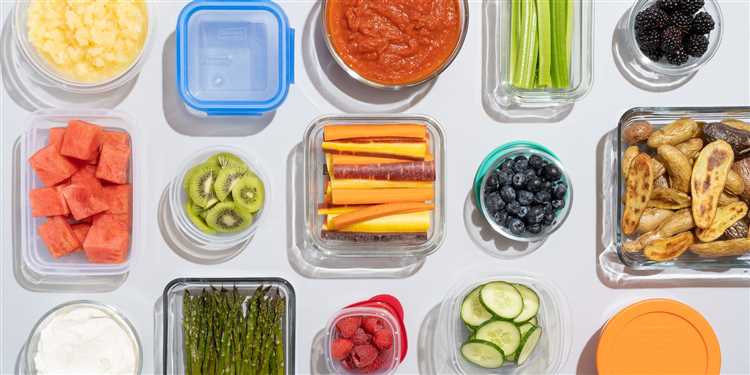
When it comes to storing food, ensuring its safety is of utmost importance. One common method of food storage is using plastic containers. However, concerns have been raised about the safety of these containers, particularly when they are used in the refrigerator. Are plastic containers really refrigerator-safe?
Plastic containers come in a variety of shapes, sizes, and materials. It’s important to note that not all plastic containers are created equal. Some plastics may contain harmful chemicals, such as bisphenol A (BPA) or phthalates, which can leach into food when exposed to heat or acidic conditions. These chemicals have been linked to various health problems, including hormone disruption and increased risk of certain diseases.
To ensure the safety of your food, it’s essential to choose plastic containers that are labeled as refrigerator-safe. These containers are typically made from food-grade plastic that is BPA-free and phthalate-free. Look for labels or symbols that indicate their suitability for refrigerator use. Additionally, opt for containers that are microwave-safe and dishwasher-safe, as they are more likely to be of higher quality and less prone to leaching harmful chemicals.
- Understanding Safe Food Storage
- Temperature Control
- Proper Packaging
- Organization
- Importance of Proper Container Choice
- Assessing Plastic Container Safety
- 1. Food-Grade Plastic
- 2. BPA-Free
- 3. Seal and Lid Quality
- 4. Heat Resistance
- Factors to Consider
- Material
- Temperature Range
- Tight-Sealing Lid
- Stain and Odor Resistance
- Best Practices for Refrigerator Storage
- Q&A
- Are plastic containers safe for storing food in the refrigerator?
- What types of plastic are safe for storing food in the refrigerator?
- Can I microwave food in plastic containers?
- Can plastic containers be reused for food storage?
- What are the alternatives to plastic containers for food storage?
Understanding Safe Food Storage
Proper food storage is essential for maintaining food quality and safety. When food is not stored correctly, it can spoil, leading to foodborne illnesses. To ensure that your food stays fresh and safe to eat, it is important to understand the principles of safe food storage.
Temperature Control
One of the key factors in safe food storage is controlling the temperature. Different foods have different temperature requirements, and it is important to store them accordingly. Most refrigerators operate at temperatures between 35°F and 40°F (1.7°C and 4.4°C), which is considered safe for most perishable foods.
However, some foods, like meat and poultry, require even lower temperatures to prevent the growth of bacteria. It is recommended to store these types of foods at a temperature below 40°F (4.4°C).
Proper Packaging
The way you package your food can also affect its storage life and safety. Using airtight containers or bags can help to maintain freshness and prevent contamination. It is important to choose food-grade containers that are safe for storing food and are free from harmful chemicals.
Plastic containers, such as those made from BPA-free materials, can be safe for refrigerator storage. However, it is important to check whether a particular plastic container is labeled as refrigerator-safe before using it to store food.
Organization

Keeping your refrigerator organized can also contribute to safe food storage. Proper organization can help prevent cross-contamination and make it easier to rotate your food to ensure that older items are used first.
- Keep raw meat and poultry separate from ready-to-eat foods to prevent cross-contamination.
- Label and date leftovers to ensure that they are used within a safe time frame.
- Store foods in a way that allows for proper air circulation to maintain proper temperatures.
- Regularly clean your refrigerator to remove any spills or expired items that can harbor bacteria.
By understanding and implementing these principles of safe food storage, you can help to prevent foodborne illnesses and keep your food fresh and safe to eat.
Importance of Proper Container Choice
Choosing the right container for storing food is crucial for maintaining its safety and freshness. The materials used in the container can affect the quality of the food and also pose health risks if not chosen correctly.
Plastic containers are a popular choice for food storage, but not all plastics are refrigerator-safe. Certain plastics can release harmful chemicals when exposed to heat or cold, which can leach into the food and contaminate it. It is important to look for containers that are labeled as refrigerator-safe and made from food-grade materials.
Another important factor to consider is the sealability of the container. Properly sealed containers help to keep air and moisture out, preventing the growth of bacteria and mold. Look for containers with tight-fitting lids or snap-on seals to ensure that the food stays fresh and safe.
Size and shape are also important considerations when choosing food storage containers. Opt for containers that are the right size for the amount of food you plan to store, as excess air in a container can cause food to spoil faster. Additionally, consider the shape of the container and how it will fit in your refrigerator or pantry. Stackable or nestable containers can help save space and keep your storage area organized.
Lastly, it is important to regularly inspect your food storage containers for signs of wear or damage. Cracked or damaged containers can harbor bacteria or allow air and moisture to enter, compromising the safety and freshness of the food. Replace containers that show signs of wear and tear to ensure that your food is properly stored.
Overall, choosing the right container for food storage is essential for maintaining safety and minimizing food waste. By considering factors such as materials, sealability, size, and shape, you can ensure that your food stays fresh and free from contamination.
Assessing Plastic Container Safety
When it comes to storing food in plastic containers, safety is of utmost importance. Not all plastic containers are created equal, and it is crucial to choose those that are safe to use in the refrigerator.
To assess the safety of plastic containers for refrigeration, there are several factors to consider:
1. Food-Grade Plastic
Ensure that the plastic containers you use are made from food-grade plastic. Food-grade plastics are specifically designed to be safe for storing food and are free from harmful chemicals that could potentially leach into your food.
2. BPA-Free
Check if the plastic container is labeled as BPA-free. Bisphenol A (BPA) is a chemical commonly found in plastic containers that has been linked to various health issues. To minimize health risks, opt for BPA-free containers.
If the container is not labeled as BPA-free, it is best to assume that it may contain BPA and avoid using it for refrigerated food storage.
3. Seal and Lid Quality
Inspect the seal and lid quality of plastic containers before using them to store food. A tight and secure seal ensures that food stays fresh and prevents leakage, reducing the risk of cross-contamination and spoilage.
4. Heat Resistance

Consider the heat resistance of the plastic container. Some plastics may warp or release harmful substances when exposed to high temperatures, such as when microwaving or dishwasher cleaning. Look for containers specifically labeled as microwave-safe or dishwasher-safe to ensure they can withstand these conditions without compromising safety.
By considering these factors and choosing the right plastic containers, you can ensure the safety of your food stored in the refrigerator. Remember to always follow manufacturer guidelines and replace containers that show signs of wear or damage to avoid any potential health risks.
Factors to Consider
When deciding whether plastic containers are refrigerator-safe for food storage, there are several factors to consider:
Material
The type of plastic material used in the container is crucial. Not all plastics are created equal, and some may release harmful chemicals when exposed to extreme temperatures. Look for containers labeled as “food-safe” or made from high-quality plastics like polypropylene (PP) or polyethylene (PE), which are known to be safe for food storage.
Temperature Range
It’s important to consider the temperature range that the container can safely withstand. Some plastics may warp or melt when exposed to high temperatures, making them unsuitable for refrigerator use. Check the manufacturer’s guidelines to ensure the plastic container is designed for refrigeration.
Tight-Sealing Lid
A tight-sealing lid is crucial for proper food storage in the refrigerator. It helps to prevent air and moisture from entering the container, keeping the food fresher for longer. Look for containers with secure and leak-proof lids to ensure the best preservation of your food.
Stain and Odor Resistance
It’s essential to choose plastic containers that are resistant to staining and absorbing odors. Some plastic containers may retain strong smells or stains from food, even after washing. Look for containers that are specifically designed to resist stains and odors, making cleaning and reuse easier.
By considering these factors, you can make an informed decision about whether plastic containers are suitable for refrigerator-safe food storage. It’s crucial to prioritize safety and ensure that the containers you choose are designed to meet the demands of food storage in the refrigerator.
Best Practices for Refrigerator Storage
Proper food storage is essential for maintaining freshness and preventing foodborne illnesses. Here are some best practices for storing food in the refrigerator:
| Food Item | Storage Guidelines |
|---|---|
| Dairy Products | Keep milk, cheese, yogurt, and other dairy products in their original packaging or in airtight containers. Make sure they are stored on the shelves, not on the refrigerator door where temperatures tend to fluctuate. |
| Fruits and Vegetables | Store fruits and vegetables in the crisper drawer, which helps maintain their moisture levels. Keep them separate from raw meats to avoid cross-contamination. |
| Meats and Poultry | Wrap raw meats and poultry tightly in plastic wrap or freezer bags to prevent juices from leaking onto other foods. Store them on the lowest shelf of the refrigerator to prevent cross-contamination. |
| Leftovers | Place leftovers in airtight containers or wrap them tightly in plastic wrap to keep them fresh. Label them with the date so that you can easily track their freshness. |
| Eggs | Store eggs in their original cartons on a shelf in the refrigerator, as the carton helps protect them from absorbing odors from other foods. |
Remember to regularly clean your refrigerator to avoid the buildup of bacteria and odors. By following these best practices, you can ensure the safety and longevity of your stored food.
Q&A
Are plastic containers safe for storing food in the refrigerator?
Yes, plastic containers are generally safe for storing food in the refrigerator. However, it is important to choose containers that are specifically labeled as “refrigerator-safe” or “food-grade.” These containers are made of materials that are safe for storing food and will not leach harmful chemicals into your food. It is also advisable to avoid using old or scratched containers, as they may harbor bacteria.
What types of plastic are safe for storing food in the refrigerator?
Plastic containers made of high-density polyethylene (HDPE), low-density polyethylene (LDPE), and polypropylene (PP) are generally considered safe for food storage in the refrigerator. These types of plastics are resistant to chemicals and do not leach harmful substances into your food. It is best to look for containers with these symbols on the bottom: HDPE, LDPE, PP, or the number 2, 4, or 5 inside a recycling symbol.
Can I microwave food in plastic containers?
It is generally not recommended to microwave food in plastic containers unless they are specifically labeled as microwave-safe. When plastic is heated, it can release harmful chemicals that can leach into your food. It is best to transfer your food to a microwave-safe dish or use glass containers for heating food in the microwave.
Can plastic containers be reused for food storage?
Yes, plastic containers can be reused for food storage as long as they are in good condition and have been properly cleaned. It is important to check for any cracks, chips, or scratches, as these can harbor bacteria and make the containers less safe for food storage. It is also advisable to avoid reheating food in plastic containers, as this can cause chemicals to leach into your food.
What are the alternatives to plastic containers for food storage?
There are several alternatives to plastic containers for food storage. Glass containers are a popular choice, as they do not leach chemicals into your food and are microwave-safe. Stainless steel containers are another option, as they are durable and do not retain flavors or odors. Beeswax wraps and silicone food storage bags are also gaining popularity as eco-friendly alternatives to plastic wrap and bags. Ultimately, the choice of alternative will depend on your personal preferences and needs.